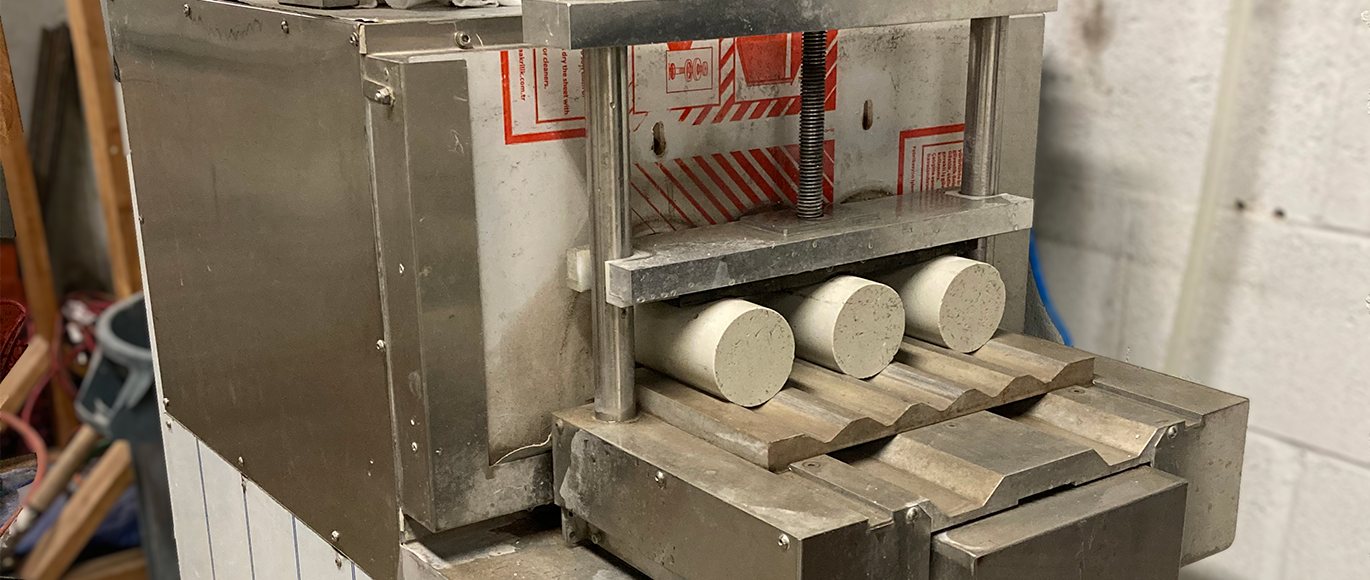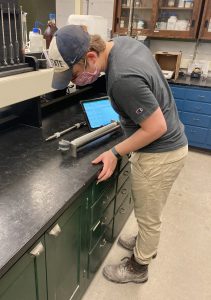
 Ultra High Performance Concrete (UHPC) is an advancement in concrete technology that has become popular in the infrastructure market. UHPC is being specified for various bridge components such as bridge deck joints, complete overlay of the existing bridge deck, and as encasements for the strengthening and protection of existing structural elements. UHPC has the capability of exceeding 10,000 pounds per square inch (psi) compressive strength in 24-hours, and exceeds 21,000 psi in 28 days, is resistant to freeze/thaw, and has excellent resistivity to both chloride permeability and abrasion. These physical properties allow for less reinforcing steel, thinner cross sections, more durable structures, and more aggressive construction schedules when compared to traditional concrete.
Ultra High Performance Concrete (UHPC) is an advancement in concrete technology that has become popular in the infrastructure market. UHPC is being specified for various bridge components such as bridge deck joints, complete overlay of the existing bridge deck, and as encasements for the strengthening and protection of existing structural elements. UHPC has the capability of exceeding 10,000 pounds per square inch (psi) compressive strength in 24-hours, and exceeds 21,000 psi in 28 days, is resistant to freeze/thaw, and has excellent resistivity to both chloride permeability and abrasion. These physical properties allow for less reinforcing steel, thinner cross sections, more durable structures, and more aggressive construction schedules when compared to traditional concrete.
Our construction materials testing laboratories have experienced staff and the necessary equipment to perform the required testing per the UHPC specifications. We have teamed with industry manufacturers to provide quality control/assurance testing during construction to confirm compliance with the project specifications and have worked with manufacturers during various phases of their product development. Our team of Professional Engineers have also been able to assist with the advancement in product development and testing strategies for UHPC. Pennoni has added specialized equipment to our construction materials testing laboratories including:
- A specimen end grinder machine that grinds and polishes the ends of the compression samples to the requirements listed in ASTM C39 and C1856. The end grinding machine allows us to test compressive strength of samples without any limitations or restrictions present with capping compounds. Our compression machines were also updated from manual controls to fully automatic controls. The fully automated compression machines allow us to apply loading to the sample in a controlled and uniform manner and the machines have data acquisition capabilities which allow for the collection of displacement data on the sample for Static Modulus of Elasticity and Poisson’s Ratio mechanical properties. These are important properties when evaluating concrete for strength, stiffness, compatibility, and load distribution.
- An autogenous shrinkage apparatus was added with real time data acquisition to test and record length changing characteristics from final set to any point beyond during the curing process. Traditional shrinkage testing procedures do not account for the changes in length of the samples within the first 24-hours. However, in UHPC this change in length accounts for most of the overall length changing characteristics that occur during the curing process. The autogenous shrinkage apparatus allows us to capture length changes from the time of final set to any point beyond. This information useful when evaluating the effects of volume changes for items such as pavement overlays and long bridge deck joints.
- Concrete maturity equipment and various environmental chambers allow us to develop maturity equations for the UHPC cured under different environmental conditions. We are currently performing maturity studies on the effect of specimen size versus curing conditions using a variety of different specimen shapes and sizes including 2×2 cubes, 3×6 cylinders, 4×8 cylinders, 6×12 cylinders, 4×4 cubes, and 6×6 cubes. We are studying the time versus temperature functions of each of these different shapes as well as comparing the compressive strengths of each size and shape under various initial curing conditions. This study is used to determine the sample mass versus temperature relationship under various curing conditions to develop alternate sampling methods that better represent the actual in-place material at the project site.
 Michael Padula, CWI, PE, serves as Associate Vice President and Chief Engineer, Construction Materials Engineering and Testing. For more information, contact Mike at mpadula@pennoni.com.
Michael Padula, CWI, PE, serves as Associate Vice President and Chief Engineer, Construction Materials Engineering and Testing. For more information, contact Mike at mpadula@pennoni.com.